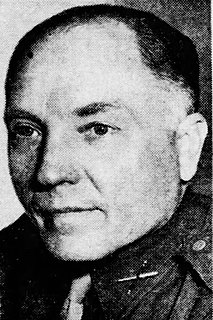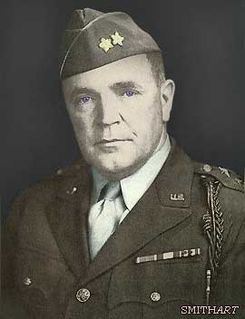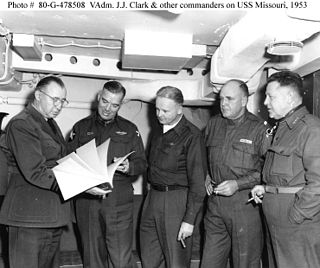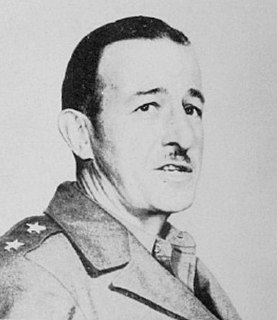
Stanley Hamer Ford was a United States Army General. He was commander of the Philippine Department, 1st Infantry Division, Seventh Corps Area, Sixth Corps Area, and the Second United States Army.

Lieutenant General William Henry Harrison Morris Jr. was a senior United States Army officer who fought in both World War I and World War II.

Lieutenant General John Breitling Coulter was a senior United States Army officer. Enjoying a distinguished 40-year military career, Coulter served during World War I, World War II and the Korean War.

Doyle Overton Hickey was an officer in the United States Army who served in World War I, World War II and the Korean War, finishing his military career as a lieutenant general.

William Benjamin Kean was a general in the United States Army.

Lieutenant General Paul Wilkins Kendall was a senior United States Army officer who served during World War I, World War II and Korean War.

Reuben Ellis Jenkins was a lieutenant general in the United States Army.

William Howard Arnold was a lieutenant general in the United States Army.

Lionel Charles McGarr was a lieutenant general in the United States Army. He was the last commander of Military Assistance Advisory Group – Vietnam.

Lemuel Mathewson was a United States Army lieutenant general.

George Windle Read Jr. was a lieutenant general in the United States Army. He was prominent as a top-tier polo player, a successful commander of World War II armor units, and the U.S. Army's Chief of Armor.

John Howell Collier was a lieutenant general in the United States Army. He was notable as a commander of 2nd Armored Division units in World War II and as the Army's Chief of Armor.

Robert Nicholas Young was a lieutenant general in the United States Army. He gained prominence in the 1950s as the commander of the 2nd Infantry Division during the Korean War and as commander of the Sixth United States Army.

Robert Miller Montague was a lieutenant general in the United States Army. He achieved prominence as the deputy commander of Fort Bliss, Texas, and commander of the Sandia Missile Base in New Mexico during the start of modern ufology and head of the U.S. Caribbean Command.

Lieutenant General Samuel Tankersley Williams was a senior United States Army officer. Williams became prominent in army history for being reduced in rank from brigadier general to colonel, and then resuscitating his career to again advance to general officer rank. He also commanded the 25th Infantry Division during the Korean War and served as commander of Military Assistance and Advisory Group – Vietnam, the predecessor to Military Assistance Command – Vietnam.

Lieutenant General Alonzo Patrick Fox was a United States Army officer. He was prominent in the 1950s as a military advisor to the Assistant Secretary of Defense for International Security Affairs and as Deputy Assistant Secretary of Defense for National Security Council Affairs following his retirement from the Army. General Fox was also the father-in-law of Alexander Haig.

Emerson LeRoy Cummings was a United States Army lieutenant general who served as the 19th Chief of Ordnance for the United States Army Ordnance Corps, and commander of the Fifth United States Army.

Francis William Farrell was a lieutenant general in the United States Army. He successively commanded the 82nd Airborne Division, V Corps and Seventh United States Army.

Robert Milchrist Cannon was a United States Army lieutenant general. He was notable for his World War II service in the China Burma India Theater and his command of the Sixth United States Army.

Gordon Byrom Rogers was a United States Army lieutenant general who served in several command positions during World War II and the Korean War, including the United States Military Advisory Group to the Republic of Korea and the 3rd Armored Division.





















